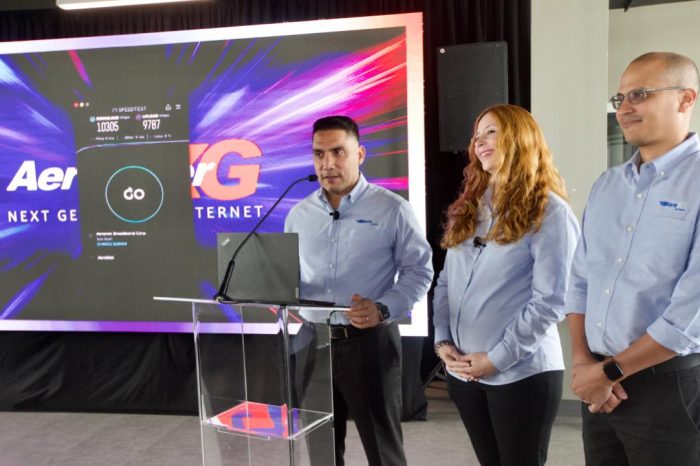Every year, the city of Las Vegas plays host to many of the biggest names in consumer electronics at the annual CES (Consumer Electronics Show)conference. For many organizations, this is the show where they release their new cutting-edge products or show their vision for the future.
This show covers everything from the latest in smart toasters to AI-powered concept electric vehicles. In 2020, over 4,500 organizations participated in the show, encompassing over 2.9 million square feet in venues around the Las Vegas strip.
This is heaven for a geek like me, and I finally attended the show this year. Besides just geeking out at the new technology, my goal was simple. I wanted to chat with vendors about the security of their products, especially those that are being targeted for home use.
In the age of internet-connected refrigerators and cheap cloud-connected home security cameras, we are connecting Internet of Things (IoT) devices to the internet at a fantastic pace. It is estimated that there are over 46 billion connected devices out there, an average of 10 devices per household. With all of these connected devices being installed in our homes, I had hoped that security would be a significant focus; however, this does not appear to be the case.
Why Security Is a Concern in These Consumer Electronics

You might ask yourself why security would be a concern with these devices. I mean, who really cares if a refrigerator has a security vulnerability? What is the worst that can happen if a fridge gets attacked? Well, unfortunately, a lot of things can happen, and few of them are good. Here are a couple of scenarios.
Imagine going to the refrigerator to get a cold glass of milk, and on the screen is a message saying if you do not pay some cybercriminals several hundred dollars soon, your fridge will stop working. This is called ransomware, and while not a serious threat to your typical household appliances right now, it is just a matter of time.
Ransomware has become one of the biggest threats to networks in organizations in modern times, and there is very little keeping them from targeting homes. With the cost of refrigerators rising to several thousand dollars, who would not pay a few hundred to keep it from becoming trash? If you rely on a warranty to fix this, you are likely out of luck, just as if someone broke into your home and wrecked it.
Another scenario is a cybercriminal using your device and network to attack other organizations. A Distributed Denial of Service (DDoS) attack is where a bad actor sends a lot of internet traffic to a target, crashing their website or even making their network so slow that they cannot function.
Cybercriminals can use these attacks to extort money from victims, or they may pay for a service to cripple the target. These attacks are often made possible through botnets or large groups of infected devices with internet access that the bad actors control, and the frequency of the attacks are up.
There was a 173% increase in these attacks just between Q3 and Q4 of 2021 (https://portswigger.net/daily-swig/report-ddos-attacks-increasing-year-on-year-as-cybercriminals-demand-extortionate-payouts). Yes, your trusty fridge might have a dark side, attacking hapless victims while also keeping your vegetables fresh, and you may never know it.
These devices can also be used as a way to get inside your network and to help cybercriminals steal information from you or to spread viruses within your home network as well. Not only are refrigerators a possible target, but any internet-connected devices can be used for these purposes and more.
Imagine cybercriminals accessing video or audio feeds from security cameras or any device in your home that has a camera or microphone built-in. This has happened and will continue to happen again.
Alarmingly, many small businesses also use these consumer-grade devices within their organizations, never considering the risks they are taking. This makes sense from a cost standpoint as enterprise-level cameras and devices can cost twice as much or more and offer features that small businesses do not need.
What I Discovered at CES
Some of the critical questions I asked these vendors were related to how long they expected to support security updates on the devices they are selling, how they handle someone reporting a security issue to them, and how security patches were installed.
OK, I get it; these are often salespeople or marketing people, not security gurus. I did not expect them all to have answers to my questions right away. However, I was hopeful that someone at the show could answer some basic questions. In most cases, I was mistaken.
Not one vendor I spoke to could tell me how long they would commit to providing security patches for the products for sale. While this may not be as critical in a cheap webcam (it is still an issue), where it was essential, such as connected electric vehicles and cars being manufactured by small and large companies, there was also no commitment.
It is essential to understand that automobile manufacturers are increasingly leaning on technologies such as self-driving features, which use computer-controlled accelerating, braking, and steering, among other things. One major automotive group has called itself a “sustainable tech mobility company,” not just a car manufacturer. When I asked about future updates for these vehicles, I was told they would be supported for “Quite some time.”
Imagine that 12 years from now, it is discovered that a bad actor could access your vehicle via the wireless hotspot or smartphone app and take over your steering, gas pedal, and braking, all while you are driving down the road. Imagine if the auto manufacturer has stopped supporting security updates to that vehicle.
While this sounds like a scary thing worthy of the tinfoilest of hats, if we do not ask the questions now and get some commitment from the manufacturers, we could find this a real issue. As recently as 2015, Chrysler recalled 1.4 million vehicles after a couple of car hackers were able to disable a vehicle while it traveled down the road at 70 miles per hour. Sometimes the tinfoil is not overkill.
Even if vehicles are not being taken over while driving down the road, other issues still arise. I happen to have a car high on the list of those stolen. As a matter of fact, my Dodge Challenger is almost three and a half times more likely to be stolen than the national average here in America.
This is partly because they are very easy to steal by simply programming a new key to the car. You do not even need to have another crucial present to do this. In less than a minute, thieves can add their key and drive off through a flaw in the infotainment system.
Dodge has issued a security recall for this issue where they no longer allow additional keys to be added to the car once locked down; however, while friends with 2019 and 2020 cars have received notifications about the update, I have not received notice for my 2016 model. Until I do, I will not drive my car to the airport, a prime spot for thieves of these cars.
This issue is not just limited to the organization that makes my car. The more computers we put in cars, regardless of the manufacturer, the more likely issues like this will arise. This is why we need a commitment for future security fixes.
Moving away from vehicles, I also spoke to several smart home device manufacturers, including those who made smart door locks. None of them were able to confirm a commitment for future support.
Conclusion
All of the walking, all of the questions, and all of the research I did at CES (The Consumer Electronics Show) illuminated a couple of things. First, security is not vital to these manufacturing organizations’ culture. If security were a crucial part of the organizational culture, I would have received far fewer blank stares when I asked even the most basic security questions from salespeople. This is a trickle-down effect where a solid and reasonable security culture at the top levels of management eventually influences those throughout the organization.
Second, people are not asking about security when making purchases. If they were, the staff at the booths would have been more prepared to answer them. This is a trickle-up effect. If people do not care to ask for improved security, the salespeople and marketing teams will not waste time learning about questions they do not have to answer. As unfortunate as this is, I cannot blame them for this.
As consumers, it is time that we start asking questions about the security of our devices, especially when we are connecting them to our home networks. These are the same home networks where we do our banking, tax filing, and other potentially sensitive things.
Along with asking about security, it is time that we show these manufacturers that it is an essential issue by buying items that promote security over those that do not. Many of these smart home devices are sold based on the lowest possible price point being the winner; however, as consumers, it would be very beneficial for us to spend an extra dollar or two for devices that are serious about security.
Once this becomes a differentiator with buyers, manufacturers will find it much easier to invest time in security research and maybe be far more likely to support the devices for several years down the road.









